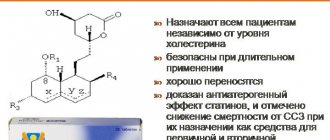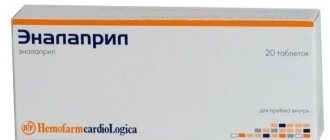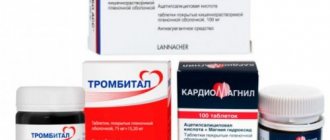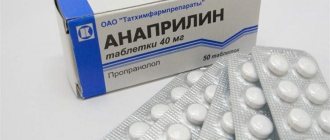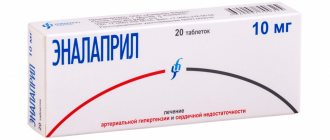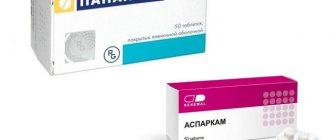Has restrictions during pregnancy
Prohibited during breastfeeding
Has restrictions for children
Has restrictions for older people
Has limitations for liver problems
Has limitations for kidney problems
Pressure changes in blood vessels increase the load on the myocardium, which often results in heart attack and death. To prevent the progression of hypertension and relieve the myocardium, cardiologists use antihypertensive drugs of different pharmacological groups. For the treatment of heart pathologies, drugs are prescribed in complex treatment and monotherapy. Quite often, doctors prescribe Anaprilin and Enalapril to lower the blood pressure index.
In this article, we will figure out what the difference is between Enalapril and Anaprilin.
Review of Anaprilin and Enalapril
The active ingredient in Anaprilin is propranolol. One tablet contains propranolol 10.40 mg. Anaprilin is a non-selective beta-blocker. Properties of this medication:
- antihypertensive;
- antiarrhythmic;
- antianginal.
These properties of the drug make it possible to use it in the treatment of cardiac pathologies with disturbances of heart rhythm and cardiac conduction, aggravated by hypertension.
Pharmacological effects of the drug
At the initial stage of therapy with β-blockers, the resistance of the peripheral parts of the blood flow system increases, but within 2-3 days it returns to its original level and gradually begins to decrease. This medication is prescribed for unstable hypertension of unknown etiology, when blood pressure surges occur chaotically and without clear reasons.
Normalizing blood pressure improves the patient’s well-being and reduces the risks of myocardial infarction and ischemic stroke.
Enalapril belongs to the pharmacological group of antihypertensive medications - ACE inhibitors (angiotensin-converting enzyme). The active ingredient in this product is enalapril in dosages of 5, 10 and 20 mg. This is a synthetic medication aimed at lowering the blood pressure index.
For decades, Enalapril has remained one of the most effective medications prescribed in the complex treatment of cardiac and vascular pathologies. This drug is not intended for self-medication; it can only be taken as prescribed by the attending physician with a clearly established dosage. The drug has diuretic properties.
Special recommendations and costs
Both drugs consist of the same group of cardiac medications and have virtually no differences. In terms of the mechanism of action, indications and effectiveness, they are almost identical. Both drugs are suitable for the treatment of hypertension, but the choice is up to the doctor, under whose supervision it will be determined which of these medications will more effectively regulate blood pressure without complications and consequences. During therapy with Anaprilin and Enalapril, care must be taken when driving automobiles and other vehicles, heavy equipment, and when performing any work that requires special attention. Medicines are among the available cardiac drugs (always available and available with or without prescriptions) and have a low cost. Anaprilin can be purchased at a price of 19 rubles, and Enalapril from 11 rubles. The cost may vary depending on the region and subject.
The principle of action of the drugs
There is a misconception that Anaprilin and Enalapril are the same thing. However, these 2 drugs belong to different pharmacological groups and have different principles of action on the body.
Anaprilin is a non-selective beta-blocker. Propranolol blocks β1-adrenergic receptors and β2-adrenergic receptors, which helps inhibit the formation of ectopic foci in the atria, and also blocks focal neoplasms in the ventricles and atrioventricular node. The drug slows down the passage of an impulse through the Kent beam, which reduces the speed of passage of excitation. This principle helps reduce:
- Heart rate, which reduces the oxygen demand of cardiomyocytes;
- renin secretion;
- clearance in the kidneys, as well as the load on glomerular filtration;
- cardiac output, which is the basis for lowering blood pressure.
The medication also inhibits the process of lipolysis in subcutaneous tissue and prevents an increase in the concentration of free cholesterol molecules in the blood (an increase in the atherogenic coefficient occurs).
In patients with coronary artery disease, the frequency and intensity of attacks of stable and unstable angina are reduced, as well as the body's endurance increases, well-being improves and the need for nitrates decreases. The drug is prescribed as secondary prevention of heart attacks. The cardioprotective effect prevents a second heart attack and reduces the risk of death by 50%.
A single dose of tablets reduces systolic blood pressure and diastolic blood pressure, but the hypotensive effect of the drug appears after 2 weeks of use.
Absorption occurs in the digestive tract - 90% of the dose taken, 99% metabolism occurs in liver cells. The maximum concentration in plasma is 1-2 hours after taking the tablet, binding to plasma proteins is 90-95%. Passes through the placental barrier and is diagnosed in breast milk. The half-life is from 3 to 5 hours, 90% is excreted in the form of metabolites through the kidneys.
The effect of Enalapril is aimed at inhibiting the activity of angiotensin and increasing the activity of renin. Effective inhibition of ACE activity is achieved 2-4 hours after the tablet has been taken.
Indications for use and dosage of Enalapril
The reduction process begins an hour after taking the medication, and the peak effect of the medication occurs after 4-6 hours. The duration of the therapeutic effect depends on the dosage of the drug, as well as on the duration of the medication course. The hypotensive effect lasts for 24 hours.
The drug is absorbed by 60% in the digestive tract, metabolism occurs in liver cells. 90% of the active ingredient is excreted through the kidneys with urine, and 10% with feces.
Composition and dosage form of drugs
Both medications are available in the dosage form of tablets and do not have any other forms. Tablets are white, round in shape.
Components of Anaprilin and Enalapril:
| Anaprilin | Enalapril | |
| Active composition | propranolol hydrochloride (40 mg per tablet) | enalapril maleate (20 mg in 1 tablet) |
| Auxiliary components | Lactose monohydrate, corn starch, gelatin, sodium carboxymethyl starch, magnesium stearate. | Sodium bicarbonate, croscarmellose sodium, milk sugar, corn starch, magnesium stearate. |
Anaprilin and Enalaprilin are available in pharmacy chains. Anaprilin is sold in blisters and also in glass jars. The second drug is released onto the pharmaceutical market only in blisters.
Indications and contraindications
The scope of application of beta blockers and ACE inhibitors is the same - hypertension and cardiac pathologies. The beta blocker Anaprilin and the ACE inhibitor Enalapril are prescribed for the following diseases:
- hypertonic disease;
- unstable angina;
sinus type tachycardia in hyperthyroidism;- ventricular tachycardia;
- ventricular and atrial fibrillation;
- extrasystole;
- essential type tremor;
- systemic atherosclerosis;
- abstinence of alcohol etiology;
- prevention of migraine pain;
- lipid imbalance;
- systolic hypertension in elderly patients.
Contraindications for use are:
- intolerance to the components of ACE inhibitors and beta blockers;
- history of Quincke's edema;
- porphyria;
- stenosis of the renal arteries and disorders in the kidney cells;
- azotemia;
- severe hypotension - systolic pressure less than 90;
- cardiogenic shock;
- stenosis of the aortic valve or aortic walls;
- pregnancy in a woman and lactation period;
- age up to 18 years.
Aortic valve stenosis
Use with caution in therapy for the following diseases:
- myocardial ischemia;
- cerebrovascular pathologies;
- liver and kidney failure;
- hemodialysis procedure;
- diabetes mellitus type 1 and 2;
- immunosuppressant therapy;
- old age after 65 years.
Children under 18 years of age are prohibited from taking medications because the risk of developing kidney pathologies and hypotension is high.
The use of medications during pregnancy is possible only when the therapeutic effect is much higher than the possible risk of harm to the fetus. Treatment should be carried out in a hospital setting, but the drugs must be discontinued 3 days before birth. Possible risks of impact on the fetus are growth retardation, intrauterine development of bradycardia, hypotension, hypoglycemia.
If there is an urgent need to prescribe drugs during lactation, then the newborn should be transferred to artificial feeding.
Instructions for use
Anaprilin tablets must be taken orally, without being tied to meals. The dosage of the drug is prescribed by the attending physician in accordance with blood pressure indicators, as well as instrumental diagnostics of heart function (ECG, EchoCG).
Standard dosages for taking Anaprilin for various pathologies:
- hypertension - a dose of 80 mg of propranolol, divided into 2 doses (morning dose and evening dose). If after 14 days of use there is no sustained decrease in the blood pressure index, then it is necessary to add another dose of the drug (40 mg), or a dosage regimen of 80 mg twice a day is allowed. The maximum permissible dosage per day is 320 mg;
Hypertonic disease - for cardiac pathologies - the initial dose is 20 mg 3 times a day, if necessary, the dosage is increased to 120 mg per day. The permissible dose of medication per day is 240 mg;
- for the prevention of migraine pain and for the treatment of tremor – 120-160 mg.
Enalapril is prescribed for the following diseases:
- renovascular hypertension - the initial dosage of enalapril per day is 5 mg. The maximum permissible dosage of medication per day is 20 mg. Most often, this dosage is prescribed twice a day (morning and evening);
- for cardiac failure, the initial dose is 2.5-5 mg. Over 7-10 days, the dosage is slowly increased and can reach 10-40 mg;
- in case of complex treatment with diuretics – 2.5 mg;
- in elderly patients, the dose of enalapril is from 1.25 to 2.5 mg.
Main differences, effectiveness and safety
What is the difference between Enalapril and Anaprilin? The main difference between the two medications is that these medications belong to different groups of drugs, but both have a hypotensive effect. Enalapril is an ACE inhibitor, and Anaprilin is a beta blocker. Therefore, these medications have different mechanisms of action. Since they have different points of influence, medications lead to a decrease in the load on the myocardium and arterial membranes, which lowers blood pressure.
What is better to choose, Anaprilin or Enalapril? According to doctors' observations, Enalapril is more effective than Anaprilin in monotherapy, but in complex therapy with ACE inhibitors and beta blockers, the therapeutic effect is much higher, which makes it possible to reduce the dosage of medications and shorten the duration of the drug course by 2-3 times.
Comparison of addiction between Anaprilin and Atenolol
Like safety, addiction also involves many factors that must be considered when evaluating a drug.
So, the totality of the values of such parameters as “syndrome o” in Anaprilin is quite similar to the similar values in Atenolol. Withdrawal syndrome is a pathological condition that occurs after the cessation of intake of addictive or dependent substances into the body. And resistance is understood as initial immunity to a drug; in this it differs from addiction, when immunity to a drug develops over a certain period of time. The presence of resistance can only be stated if an attempt has been made to increase the dose of the drug to the maximum possible. At the same time, Anaprilin has a fairly low “syndrome” value, just like Atenolol.
Side effects
ACE inhibitors and beta blockers are well tolerated by the body both as monotherapy and in combination. Possible side effects from taking both medications are the same and are presented in the table.
| Organ systems | Frequently occurring adverse reactions | Adverse reactions that occur infrequently | Rare side effects |
| Hemostatic system and lymph |
|
| |
| Metabolism |
|
|
|
| Nervous system and psyche |
|
|
|
| Blood circulation system and heart |
|
|
|
| Respiratory system |
|
|
|
| Digestive organs |
|
|
|
| Skin |
|
|
|
| Kidneys and urinary system |
|
| |
| Reproductive system |
|
|
Adverse reactions
When treated with Anaprilin and Enalapril, undesirable reactions may occur. They are divided into two groups: reactions to the body’s tolerance to the drug + the degree of the pathological process and dosage discrepancy, that is, overdose.
Brief description of unexpected reactions:
| Violation area | Adverse reactions | |
| Anaprilin | Enalapril | |
| CNS | Weakness, excessive fatigue, pain in the head, dizziness, sleepiness, or vice versa, insomnia, anxiety, depressive syndrome, confusion, tremors, nervous conditions, restlessness, vivid dreams, hallucinations may occur. | Headache, fatigue, dizziness, at high dosages - sleep disturbance, nervous, depressive states, balance may be impaired, sensitivity in some parts of the body, tinnitus. |
| Sense organs | Dryness of the eye membranes. | Does not affect. |
| Cardiac vascular system | Sinus-type bradycardia, atrioventricular block, deterioration of chronic heart failure, disturbance of cardiac rhythm, decreased blood pressure, vasoconstriction, orthostatic collapse, pain in the chest. | Orthostatic collapse, fainting, palpitations, chest pain, hot flashes. |
| Digestive system | Vomiting, nausea reflex, discomfort in the epigastrium, constipation or diarrhea, disturbances in the functioning of the liver, disturbance of taste, an increase in the amount of liver transaminases. | The same as when taking Anaprilin, including an increase in bilirubin in the blood, the development of herpatitis, pancreatitis, and when treated with high doses - inflammation of the tongue. |
| Respiratory system | Difficulty in nasal breathing, bronchospasm. | Dry cough. |
| Endocrine system | Change in the amount of glucose in the blood. | — |
| Urinary system | The appearance of protein in the urine, a disturbance in the functioning of the kidneys. | |
| Hematopoiesis | Bleeding of various types, decreased number of leukocytes. | Decreased number of neutrophils in the blood, agranulocytosis. |
| Skin | Increased activity of the sweat glands, skin reactions similar to psoriasis. | Hair may fall out during treatment with high doses, rash. |
| Body reactivity and other reactions | Allergies - itching, skin rash, urticaria, pain in the back, joints, decreased potency, withdrawal reaction. | Impotence, angioedema, hyperkalemia, convulsions. |
In addition to the above side effects, individual reactions to medications may occur. Side effects often occur in patients with a history of complications and a chronic form. Yes, frequent undesirable effects occur with overdoses of antihypertensive drugs.
Interaction of medications with other medications and analogues
To take medications, it is important to know their compatibility with other medications and the development of adverse reactions of the body to their use. Results of taking Enalapril and Anaprilin together with other medications:
- non-steroidal anti-inflammatory medications reduce the hypotensive effect of medications;
- hyperkalemia is provoked by taking diuretics, which conserve potassium in the body;
- analgesics and antibacterial medications reduce the hypotensive property;
- The effectiveness of medications is enhanced by the combined use of calcium antagonists and nitrates.
The most popular analogues of Enalapril with identical composition and active ingredients are:
- Swiss analogue of Renitek.
- Czech medicine Enarenal.
- Enap N, produced in Slovenia.
Popular analogues of Anaprilin are:
- Propranolol is a German-made medication that is prescribed for high blood pressure, various types of angina, and myocardial infarction.
- Sotahexal is a German analogue that is prescribed for high blood pressure, as well as cardiac pathologies of impaired conduction of impulses and heart rhythm.


